8 Low-Maintenance Landscaping Ideas for Corpus Christi, TX
BY KIMBERLY MAGERL | MAY 9TH, 2023 | CORPUS CHRISTI, LAWN CARE, TEXASWhite sand beaches are the heart and soul of the Gulf Coast Capital. Your weekends are best spent surfing snorkeling, kayaking, or fishing, not maintaining your South Texas lawn. Whether you prefer the kid-friendly calm waters at McGee Beach or the breaking waves at Bob Hall Pier, there are low-maintenance landscaping ideas that will cut down on your outdoor tasks so you can feel the sand between your toes.
Switching to low-maintenance landscaping means spending less time and effort watering, weeding, mowing, and removing pests. In subtropical areas like Corpus Christi, where summer temperatures can soar to well over 90 degrees Fahrenheit, energy and water conservation is important.
In this article, we’ll cover:
8 Low-Maintenance Landscaping Ideas for Corpus Christi
- Plant Salt-Tolerant Perennials
- Lay Down Texas Roots With Native Plants
- Soft Mulch Your Garden Beds
- Add Sustainable Hardscaping
- Conserve Water With Xeriscaping
- Mow Less With Groundcover
- Consider No-Mow Artificial Grass
- Plant Southern Succulents
FAQ About Low-Maintenance Landscaping in Corpus Christi
8 Low-Maintenance Landscaping Ideas for Corpus Christi
1. Plant Salt-Tolerant Perennials
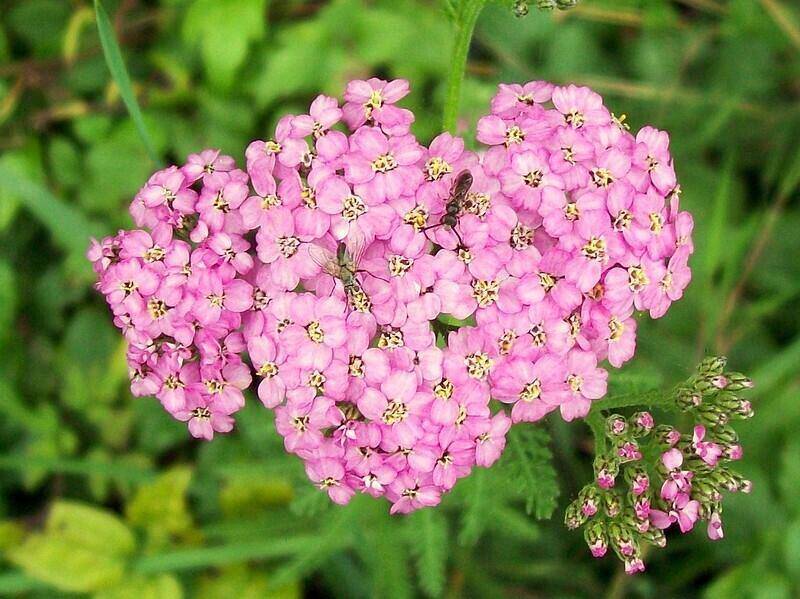
Photo Credit: Peter O’Connor aka anemoneprojectors / Flickr / CC BY-SA 2.0
Living near the ocean has its perks, including long walks on the beach and salty breezes. It also means local Corpus Christi water sources test high for salinity. The bright flowers you see while walking through your local store are annuals and are not always salt-tolerant. These inexpensive flowers look great, for now, and last one growing season before dying in late fall, even in Texas.
If bright blooms are your thing, consider switching out your annuals for salt and drought-tolerant perennials. Perennials have a shorter, more defined blooming season than annuals, but they survive the cold winters and re-bloom every year. Perennials are more expensive upfront. However, they tolerate extreme weather and come in many varieties, such as deer-resistant, shade-loving, and salt-tolerant types for your Corpus Christi yard.
If you are ready for landscaping beauty on repeat, check out some of the best salt-tolerant perennials for Corpus Christi:
- Baby Sun Coreopsis (Coreopsis grandiflora)
- Butterfly Milkweed (Asclepias tuberosa)
- Common Yarrow (Achillea millefolium)
- Lantana (Lantana spp.)
- Rock Rose (Pavonia lasiopetala)
- Shrimp Plant (Justicia brandegeeana)
Advantages of perennials:
- Bloom yearly
- Last 10-20 years or more
- Improve soil structure
- Prevent erosion
- Water and nutrient-efficient
Estimated cost: The average cost of a perennial plant varies depending on the size and type of plant, purchase location, and whether you are having a professional handle your landscaping. If you head to your local store to purchase your own perennials, you can expect to spend between $10 to $100 per plant.
2. Lay Down Texas Roots With Native Plants
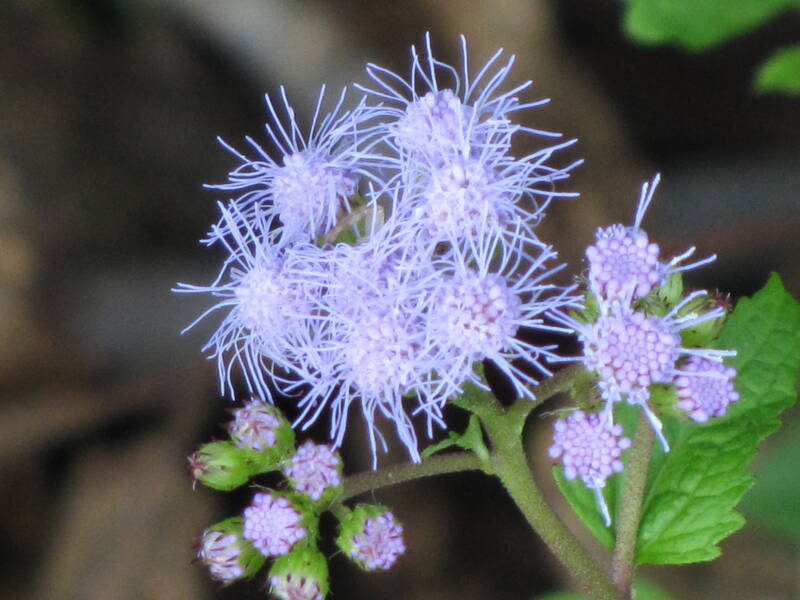
Photo Credit: Linda M Morgan / Wikimedia Commons / CC BY-SA 3.0
Native Texas plants promote a healthy ecosystem and thrive in the South Texas heat and humidity while remaining cold-hardy enough to survive a surprise winter snow. They are the most low-maintenance plants you can include in your landscaping project. Native plants are hands-off and resistant to local insects and diseases.
There are many Corpus Christi native plants to choose from, including:
- Indian Blanket (Gaillardia spp.)
- Mistflower (Eupatorium spp.)
- Texas Persimmon (Diospyros texana)
- Tropical Sage (Salvia coccinea)
- Turks Cap (Malvaviscus drummondii)
Advantages of native plants:
- Thrive in Corpus Christi’s subtropical climate
- Require less water and fertilizer
- Support a diverse ecosystem, providing food and shelter for local wildlife, hummingbirds, and pollinators
- Disease and pest-resistant
- Salt-tolerant
Estimated cost: Like perennials, native plant prices vary widely based on many factors, including type, size, and location. On average, you can expect to spend between $15 to $50 per shrub, $5 to $50 per vine, and $200 to $1,500 per tree.
3. Soft Mulch Your Garden Beds
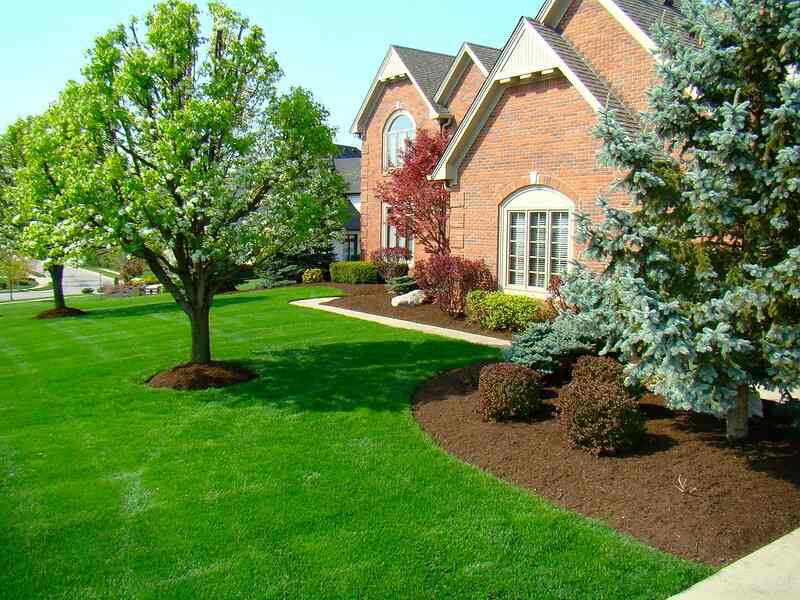
Photo Credit: Tom Britt / Flickr / CC BY 2.0
Mulch locks in soil moisture, reduces weeds, and protects your plants’ roots from heat. It is a loose material typically made of organic matter like compost, tree bark, and wood chips. Mulching is an inexpensive DIY job that increases the aesthetic appeal of your outdoor space.
Organic mulch is the best option for your South Texas landscape. It adds beneficial nutrients to the soil as it decomposes, but you will need to add a fresh layer annually. Inorganic mulches like gravel, river rock, and landscape glass are low-maintenance and durable, but the hard pieces ricochet off windows and siding during a hurricane.
Organic mulch for your Corpus Christi landscape:
- Hardwood and softwood chips
- Bark
- Pine needles
- Leaves
- Grass clippings
Mulch to avoid:
- Rock, stone, lava rock
- Landscape glass
- Rubber mulch
Advantages of mulch:
- Increases moisture retention
- Reduces weeds
- Protects plant roots from extreme heat
- Adds curb appeal
Estimated cost: According to Lowes and Home Depot, wood mulch costs between $3 to $5 per 2-cubic-foot bag. If your landscaping project requires a lot of mulch, you can often purchase it in bulk to save money.
4. Add Sustainable Hardscaping
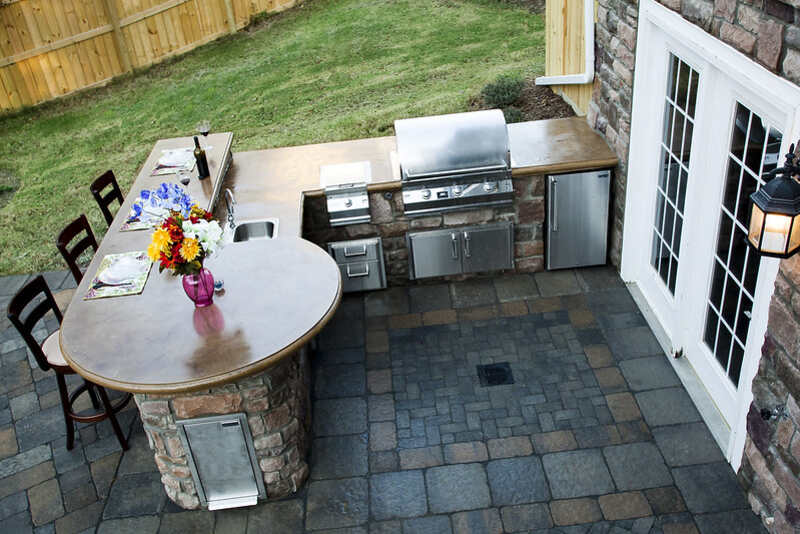
Photo Credit: Interlocking Concrete Pavement Institute / Flickr / CC BY 2.0
You don’t have to live in Hill Country to experience hot Texas summers. No matter where you live in Texas, weekly lawn maintenance is a daunting task, and there are a million other things you would rather do. The fewer plants in your landscape design, the less time you will spend maintaining your lawn and Texas natives.
Consider hardscaping your backyard to add sustainable visual interest while eliminating the need for weekly maintenance. While some hardscaping ideas like loose rocks and landscape glass are best left to the inland cities of Central Texas like Dallas, Austin, Houston, and San Antonio, there are still many hurricane-safe hardscaping options for your beach-city landscape.
Hurricane–safe hardscapes include:
- Decks
- Patios
- Pavers
- Garden paths
- Fire pits
Hardscapes to avoid:
- Pergolas
- Decorative stones
- Rock gardens
- Water features
- Statuary
Advantages of hardscapes:
- Only require annual cleaning
- Increase property value
- Add entertaining and outdoor living space
- Water-efficient
- Reduce soil erosion
- Boost curb appeal
Hardscapes don’t require maintenance at all except for an annual cleaning. They are a set-it-and-forget-it choice for garden design and don’t require watering, pruning, or mowing. Hardscapes are an expensive upfront investment, but they increase home value and curb appeal, saving you time and money in the long run.
Estimated cost: Be prepared to spend around $7,500 for a new deck, $4,000 for a patio, and $3,000 for a flagstone walkway.
5. Conserve Water With Xeriscaping
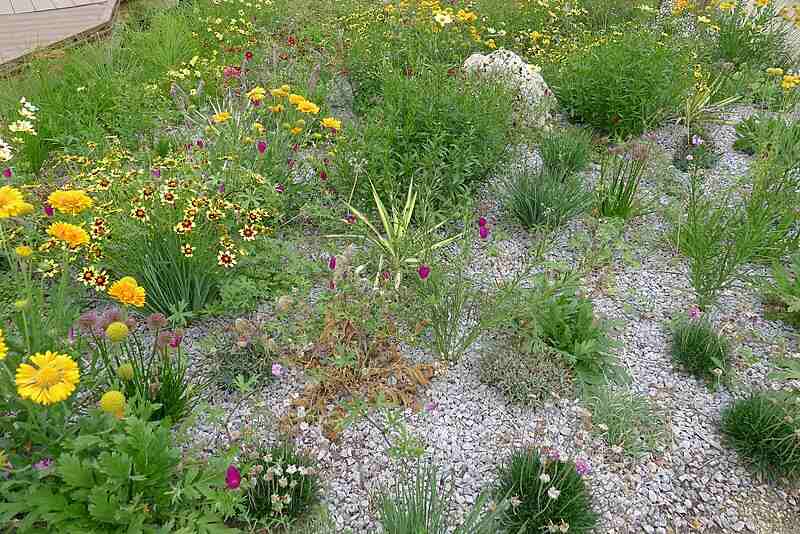
Photo Credit: James Steakley / Wikimedia Commons / CC BY-SA 4.0
In the U.S., landscape irrigation makes up nearly one-third of all residential water usage. Like hardscaping, xeriscaping focuses on low-maintenance landscaping with an emphasis on water conservation. This practice involves creating a beautiful home landscape that requires no watering outside of regular rainfall.
Corpus Christi native plants are a great water-wise option for xeriscaping your yard and giving your irrigation system a break. They are naturally salt-tolerant, drought resistant, and adapted to harsh Texas summers. Besides native plants, some basic steps for xeriscaping your yard include:
- Plan and hydrozone your landscape by grouping plants with similar water needs together
- Soft mulch your flower beds for maximum water retention
- Install smart irrigation with a rain sensor, drip lines, and automatic sprinklers
- Minimize turfgrass area
- Blend hurricane-safe hardscaping elements into your landscape
Advantages of xeriscaping:
- Conserves water
- Lowers water bills
- Reduces runoff
Estimated cost: Professional xeriscaping costs between $5 to $20 per square foot, depending on many factors like plant selection and the size of your yard. While upfront costs may seem high, you will save around $0.36 per square foot annually on water and maintenance costs.
6. Mow Less With Groundcover
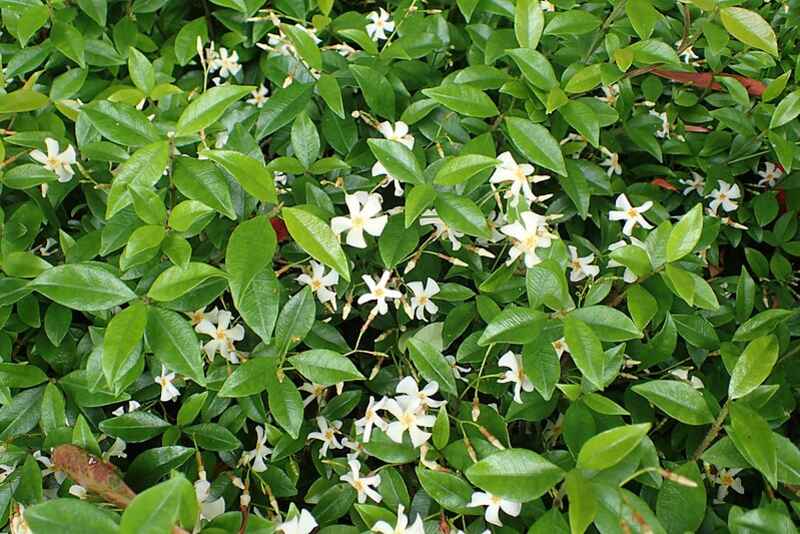
Photo Credit: Kenraiz / Wikimedia Commons / CC BY-SA 4.0
Low-maintenance groundcover makes a great alternative to traditional warm-season turfgrass. These plants grow a few inches tall and spread quickly to fill horizontal space. Groundcovers fill areas of your lawn to mimic “grass,” while their low-maintenance needs mean less work for you.
Most species still require water and the occasional fertilizer, but selecting a native Texas groundcover will ensure your new “grass” is hardy, drought-tolerant, salt-tolerant, and best of all, low-maintenance.
Check out these popular Corpus Christi groundcovers:
- Asiatic Jasmine (Trachelospermum asiaticum)
- Goat’s-foot Morning Glory (Ipomea pes-caprae)
- Trailing Lantana (Lantana montevidensis)
- Wedelia (Wedelia trilobata)
Advantages of groundcovers:
- Conserve water
- Pest resistant
- No mowing required
- Fewer weeds
Estimated cost: According to Corpus Christi landscaping experts, Moon Valley Nurseries, groundcover plants cost around $5 to $50 each, depending on size.
7. Consider No-Mow Artificial Grass
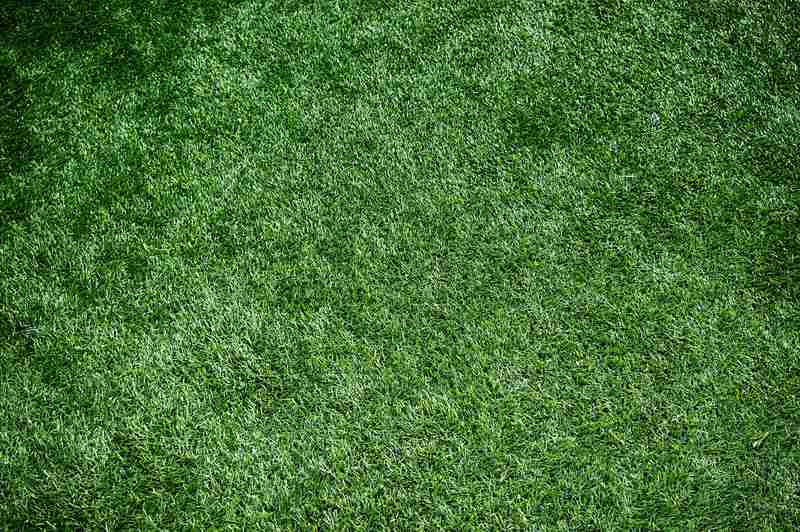
Photo Credit: Pixabay
The grass is always greener when the grass is artificial turf. The Brady Bunch helped put synthetic grass on the map, and its popularity has waxed and waned over the years. Synthetic grass is eco-friendly, comes in a variety of colors and styles, and is essentially an outdoor carpet.
Artificial grass is virtually maintenance free, and thanks to technological advancements, it is hard to tell fake grass from real grass in most cases. Unfortunately, it is expensive to install and there is some debate that it renders your soil unusable in the future.
Advantages of artificial grass:
- No maintenance other than occasional cleaning
- Pest free
- Reduces water consumption
Estimated cost: Professional artificial grass installation costs between $5 to $20 per square foot.
8. Plant Southern Succulents
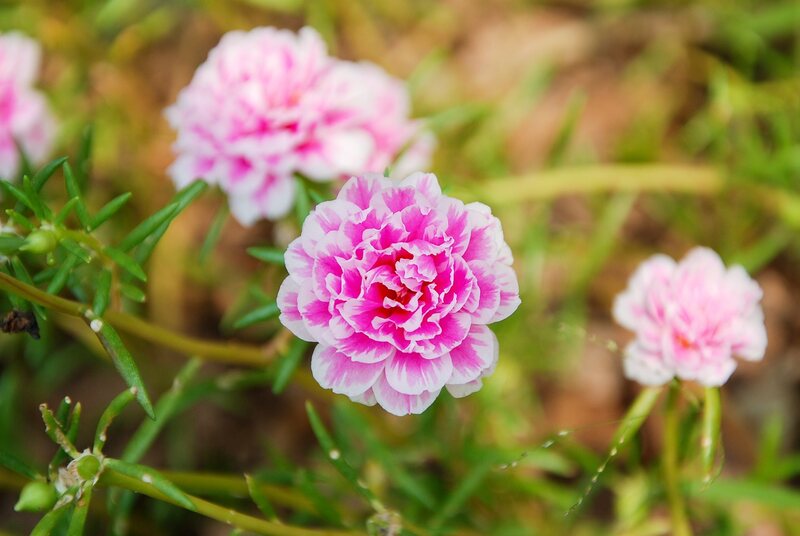
Photo Credit: Pixabay
Drought-resistant succulents like cacti and agaves may seem better suited to the dry inland cities of Central Texas. However, Corpus Christi’s unique USDA zones, 9a, 9b, and 10a, are well-suited for salt-tolerant succulent varieties.
Succulents love arid climates, and some varieties are highly salt tolerant and thrive in coastal regions with polluted or acidic soils thanks to thick leaves or trunks. They prefer to be left alone and work well for xeriscaping a landscape for water conservation. Succulents come in a variety of shapes and sizes and are incredibly low-maintenance.
Succulents need:
- Deep, infrequent watering
- Good drainage and air circulation
- Full sun
- Well-drained soil low in organic matter
- Warm temperatures
Popular salt-tolerant succulent varieties for Corpus Christi include:
- Glassworts (Salicornia)
- Moss Rose (Portulaca grandiflora)
- Velour (Aeonium velour)
- White Hair Agave (Agave albopilosa)
Advantages of succulents:
- Drought-resistant
- Diverse shapes and sizes
- Adaptable
Estimated cost: The price depends on the size and type of succulent and ranges from $10 to $75 per plant.
FAQ About Low-Maintenance Corpus Christi Landscaping
Experts know little about the salinity tolerance of most Texas native wildflowers. Most are hardy, heat and drought-tolerant, and low-maintenance once established. If you want to include wildflowers in your Corpus Christi landscape, check out these salt-tolerant varieties that may or may not be native:
• Common Cordgrass (Sporobolus anglicus)
• Eelgrasses (Zostera spp.)
• Marsh Samphire (Salicornia europaea)
• Sea Aster (Tripolium pannonicum)
Succulents thrive in the Corpus Christi area. Typically, water your succulent plants once per week when it has not rained.
There are many types of artificial turf, including pet-friendly turf, that are specially designed for your furry family members to be stain and odor resistant and easy to clean.
Professional Corpus Christi Landscape Maintenance
Hurricane season creates the best surf, but it also wreaks havoc on your Corpus Christi landscape. Check out our list of the best hurricane-resistant landscaping ideas to combine with your low-maintenance landscape, so you can reclaim your weekends and spend more time at the beach.
Better yet, stop wasting your time on lawn maintenance. Consider letting Wikilawn hook you up with a local landscaping company that can handle all of your lawn care needs so you can get back to the beaches of the Gulf Coast Capital.
Main Image Credit: Butterfly Milkweed / Joshua Mayer / Flickr / CC BY-SA 2.0